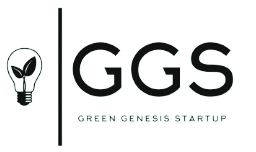
Aim of Case Study
Pin Bike is a device that, mounted on the bicycle, certifies the kilometers traveled in urban areas, for example from home to work or school, and in return gives cash credits that can be spent in the shops of your city, thus promoting sustainable mobility, and at the same time proximity trade.
Pin Bike's goal is to encourage sustainable urban mobility by bicycle and to carpool (shared car), with a "gamification" initiative and a patented monitoring and certification system that directly involves the citizen/worker, and creates a bridge of initiatives with the Municipality / Company in which it resides.
In the kit: a BlueTooth device for your bicycle, a smartphone app, a smartphone holder on the handlebar, and a signaling LED light.
The most direct example of use is the one related to mileage reimbursements on home/school or home/work journeys.
Pin Bike is configured as an infallible certification tool for bicycle travel (and carpooling), thus giving the Administration / Company a direct and constant telematic control system. The management portal includes a map of the city to evaluate the roads with the most influx of bikes.
The points can be doubled or tripled based on the time slots or periods of the year. They will be expendable with initiatives guaranteed by the client (the Administration or the Company), and by network operators (local and national).
Since its inception in 2018, the system has been adopted by 16 cities in Italy, for a total of 1,640,362 km pedaled, equal to 235 thousand kg of carbon dioxide saved, and with prizes paid for 150 thousand euros.
Starting from June 2022, the Pin Bike device will be installed on the bicycles of citizens of Tallinn (Estonia), Istanbul (Turkey), and Braga (Portugal), to reward the most virtuous citizens with a voucher that can be spent in neighborhood shops.
• sustainable mobility,
• gamification,
• circular economy
• smart city
Learning Outcome
This case study highlights the importance of sustainable mobility, which can also serve as an incentive for supporting traditional, local, and proximity trade. In this case, the economic voucher given to citizens can only be used for commercial activities within the city, promoting the economic growth of the local community. By adopting sustainable transportation options, individuals can not only reduce their environmental impact, but also support the businesses and economies of their communities.
Email / contact
https://www.pinbike.it/
